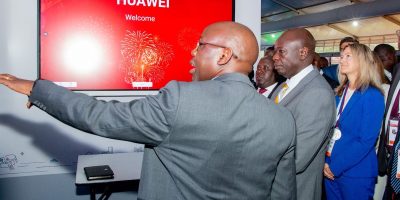Huawei’s turbulent relationship with the United States started late last year with accusations of privacy issues as well as IP theft. Things then quickly escalated leading to the arrest of Huawei’s CFO in Canada, which was followed by the U.S. government order banning government agencies from using Huawei tech.
Huawei then sued the U.S. government for this ban which also included calls by the Federal government for U.S. companies to using Huawei equipment which also saw Huawei pull put from plans to launch their smartphones in the U.S.
For the past couple of months, things have not been easy for Huawei but they only got worse after President Trump signed an executive order barring Huawei from purchasing any products or services from U.S. companies.
This executive order is what led to the chaos that we see today in the name of Huawei vs The U.S., here’s a timeline of the events that followed Trump’s orders, events that threaten the very existence of Huawei as a company:
May 19 – Android License Revoked
Google was first to follow through with the executive order, cutting off any business relationship with Huawei. Google revoked Huawei’s Android license, which meant that future Huawei devices will not have access to Google’s version of Android, including the Play Store, software updates and Google services. [Read More]
May 19 – Chip Makers Cut Off Business With Huawei
Right after Google’s move, Intel Qualcomm and Broadcom also announced that they were halting business with Huawei. Intel produces chips that Huawei uses on their laptops, Broadcom chips are majorly used on their servers while Huawei still uses a few Qualcomm chips on their smartphones.
Micron Technologies and Western Digital also followed suits, citing that they will no longer be providing memory chips to Huawei, in line with the executive order.
May 20 – Huawei Gets 90-Days Grace Period
The United States Commerce Department issued a 90-day temporary license to Huawei, allowing the company to issue software updates and maintain existing devices. The grace period was also a reprieve to U.S. telcos who were caught in the crossfire as most of them use Huawei equipment, this temporary license allows these telcos to make changes and switch from Huawei equipment.
The temporary license, however, restricted Huawei from purchasing any U.S. components (whether hardware or software) to manufacture new devices. [Read More]
May 21 – Microsoft Locks Out Huawei from Store, Leaves Windows Open
Pardon the terrible pun headline up top but it covers exactly what transpired. Microsoft quietly removed all Huawei devices from its online stores but kept an inventory of their existing stock in physical stores. The company did not issue any official statement, but it is believed that this move is on compliance with the executive order. However, Microsoft has remained quiet over the future of Windows software and Huawei hardware. Chances are that the company will respect the executive order and revoke Huawei’s license but as of 21st May, that had not happened.
May 22 – UK and Japanese Telcos Drop Huawei Devices From 5G Plans
UK’s telcos, EE and Vodafone independently excluded Huawei from their upcoming 5G rollout plans. The two telcos who had both started pre-orders for Huawei’s Mate 20X 5G smartphone paused the pre-orders citing uncertainty over the future of Huawei phones.
EE said that they will only restock Huawei devices after the company can assure its customers, long-term usability of the devices. Vodafone similarly said that they were waiting for certainty over Huawei devices.
Japanese carriers also collectively paused the launch of Huawei’s new devices, as things get thicker for the company.
May 22 – Huawei’s ARM [License] Falls Off
ARM out of the blues announced that it was seizing business with Huawei. ARM, the company that designs the architecture behind all of Android’s processors and GPUs is a UK company, therefore, it cutting off Huawei business came as a surprise.
However, ARM says that its chip designs include “U.S. origin technology” thus it is compelled to follow the executive order. This left Huawei is trouble since its in-house processors, Kirin, rely on ARM technology.
Interestingly, the company that actually makes the Kirin chips on behalf of Huawei, Taiwan Semiconductor Manufacturing Company says it’ll continue supplying to Huawei since its business with Huawei is not affected by the executive order.
May 24 – No More SD Cards On Huawei Devices
Huawei was kicked out of the SD Association, which means that the company will no longer be allowed to offer SD and MicroSD card technology on their future devices. Current Huawei devices with this tech will function as they should but any future development will exclude SD card tech. This, however, is not such a big deal as Huawei recently developed its own memory card standard called Nano-Memory Cards which as much smaller than MicroSDs and Huawei has been using this technology on their newer devices.
The company was also kicked out of the Wi-Fi alliance temporarily and Huawei also voluntarily left JEDEC – a semiconductor standards group best known for defining RAM specifications.
May 29 – Microsoft Revokes Huawei’s Windows License
Aside from delisting Huawei products from its online store, Microsoft has gone ahead and revoked Huawei’s Windows license. Just like with Android, current Huawei devices will function as they should, however, there’s no mention of whether they will be getting updates, seeing that Windows 10 May Feature Update is already available.
The lack of a Windows license will mean Huawei cannot produce any new laptops running on Windows software. A source familiar with the matter states that Microsoft will reinstate the license once the executive order is reversed.
May 29 – Huawei Reinstated Into The SD Association
On May 24, Huawei was quietly delisted as a member of the SD Association, which meant that the company could not use any SD technologies (SD Card and MicroSD card) on their devices. A few days later, the organization has reinstated Huawei’s membership but have not yet offered an explanation of why, but at least that’s good news for Huawei.
May 31 – Huawei Mate 20 Pro Back on Android Q Beta Program
On May 21, Google quietly removed the Mate 20 Pro from a list of devices that would get early access to Android Q in a beta program meant at ironing out bugs and issues before the general public release later on this year. Surprisingly, the company has reversed this action and the Mate 20 Pro is back on the list of Android Q Beta devices once again.
There’s no explanation as to whether this shall remain so even after the 90-day grace period Huawei has elapses but it is a good move that might trigger more companies that had distanced themselves from Huawei to come crawling back.
June 7 – Facebook Apps Will No Longer Be Pre-Installed on Huawei Phones
The latest blow to Huawei comes in the form of a set of Facebook apps, namely; Facebook, Messenger, Instagram and WhatsApp. Reuters reports that Facebook has revoked a deal with Huawei that allowed the company to pre-install these apps on its phones.
This will not affect current devices (even those in stores) but all new devices that are yet to leave the factory, will not have Facebook apps pre-installed.
June 18 – Microsoft Restocks Huawei Laptops Online
About a month ago Microsoft took off Huawei laptops from their online inventory. As much as the company kept selling them offline, it was clear this move was propelled by Trump’s orders.
Now, the company has relisted Huawei’s devices online, “We have been evaluating, and will continue to respond to, the many businesses, technical and regulatory complexities stemming from the recent addition of Huawei to the U.S. Department of Commerce’s Export Administration Regulations Entity List. As a result, we are resuming the sale of existing inventory of Huawei devices at Microsoft Store,” read Microsoft’s statement.
For now, the Huawei MateBook, MateBook 13 and MateBook X Pro are all listed online.
June 25 – Microsoft and Intel Promise Not to Abandon Huawei Users
Microsoft and Intel have both released independent statements stating that they will continue to support existing Huawei devices which rely on their platforms.
Microsoft says that will continue to issue software updates to Huawei devices that are currently in circulation; “Our initial evaluation of the U.S. Department of Commerce’s decision on Huawei has indicated we may continue to offer Microsoft software updates to customers with Huawei devices,” read the company’s statement.
Intel also said that it will continue to issue security updates and driver support to Huawei devices that run their chips.
June 29 – U.S. Companies Allowed To Sell To Huawei
During the G20 Summit in Osaka, Japan, President Donald Trump made an announcement that meant good news for Huawei. The U.S. President said that U.S. companies can sell equipment to Huawei, “U.S. companies can sell their equipment to Huawei. We’re talking about equipment where there’s no great national security problem with it,” he said in a vague statement.
However, Huawei is still on the entity list, since Trump’s words were not followed by any official statement or actions. It does seem though that Huawei will do just fine since Trump’s words mean that, component makers like Qualcomm and the likes of Google and Microsoft that supply software to the company can now freely do so.
August 19 – U.S. Government Extends Huawei License
The initial ban had been lifted for a period of 90 days, ending August 19th, after which, the U.S. government has now issued another extension, for 90 days to end on November 19th. “Some of the rural companies are dependent on Huawei, so we’re giving them a little more time to wean themselves off,” said Wilbur Ross, Chamber of Commerce Secretary.
This will be a continuously updated article covering all the drama that followed Trump’s executive order banning Huawei from importing any of U.S. goods and services. Here’s all the coverage we have on Huawei vs The U.S.
Feel free to share your thoughts on this matter in the comments section below.





Comments